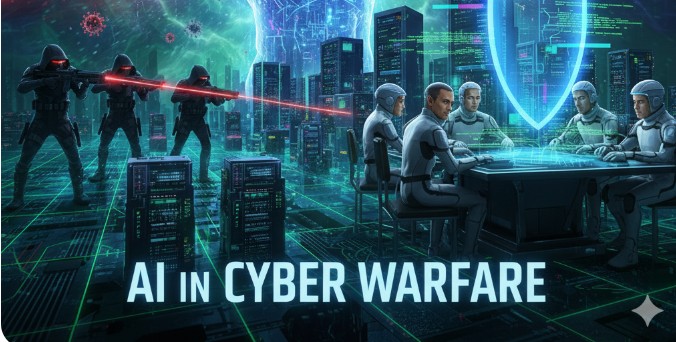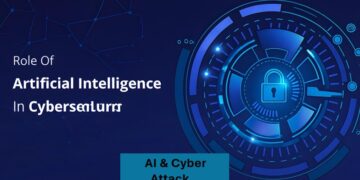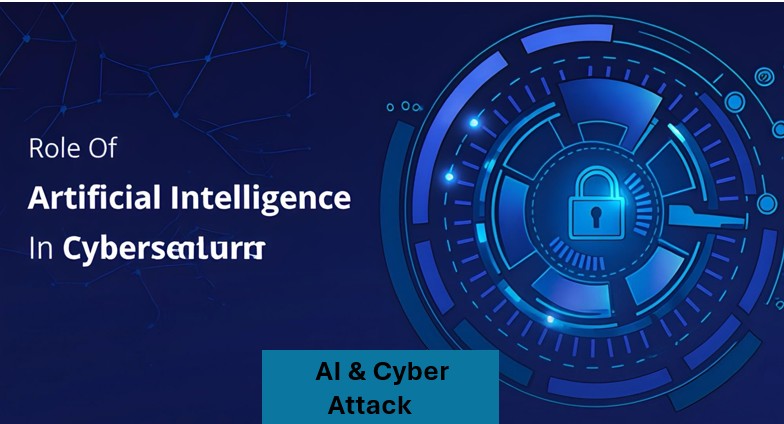Discover how artificial intelligence is changing cyber warfare. Learn how hackers use AI to launch smarter attacks, and how businesses, governments, and individuals can fight back with AI-powered defenses.
Introduction: When Hackers and Defenders Both Use AI
Not long ago, cyberattacks were the work of skilled hackers spending long hours manually breaking into systems. Today, artificial intelligence (AI) has changed the game. Hackers can now automate much of the work—scanning for weak spots, creating convincing phishing emails, or even helping generate new ways to break into systems.
On the other side, defenders—from large corporations to national governments—are also using AI to protect systems, detect unusual behavior, and respond faster than ever before.
The battlefield of cyberspace is no longer just about firewalls and antivirus software. It’s now a fight between AI-driven attackers and AI-driven defenders—and the outcome affects businesses, governments, and even individuals at home.
How AI Helps Hackers: Smarter, Faster, and Cheaper Attacks

AI is a force multiplier. It allows cybercriminals to do more damage with fewer resources. Here’s how:
1. Automated Reconnaissance
Traditionally, hackers had to spend time gathering information about their targets—what systems they use, what software versions are running, and where the weak points might be.
Now, AI tools can scan thousands of websites, databases, and public files in minutes, flagging the most vulnerable systems automatically.
For example, instead of one hacker probing a few websites, AI can create an automated hit list of hundreds of vulnerable targets, making attacks much easier to launch.
2. AI-Powered Phishing and Scams
You’ve probably received a phishing email—something that looks like it’s from your bank or employer, but is actually a trap. In the past, these scams were often riddled with spelling errors or odd grammar.
But generative AI can now write perfectly polished, personalized emails in seconds. They can mimic writing styles, include accurate personal details (pulled from social media), and even generate fake voices or deepfake videos.
This means anyone—student, employee, CEO—can be tricked more easily than before.
3. Attacking Security Systems Themselves
Hackers don’t just try to break into systems—they also try to trick the AI tools used by defenders. This is called adversarial machine learning. For example, an attacker might feed false data into a system to make it ignore real threats—or overwhelm it with noise so it flags harmless activity as dangerous.
In plain terms: hackers can teach the “guard dog” to look the wrong way.
4. Supply-Chain Attacks at Scale
AI can also be used to map out complex supply chains—like all the companies that provide software or hardware to a major organization. By spotting the weakest link, hackers can attack a small vendor and use it as a backdoor to a much bigger target.
This is dangerous because one small compromise can lead to nationwide damage.
How AI Helps Defenders: Smarter Shields Against Smarter Attacks
Thankfully, defenders are not standing still. Security teams are also using AI to build stronger shields and faster responses.
1. Detecting Anomalies Before It’s Too Late
AI can sift through millions of logs and network signals to spot unusual activity—like a login from an unusual country, or a process behaving strangely on an employee’s computer.
Unlike traditional security systems, which rely on known “signatures” of malware, AI can spot new, never-before-seen attacks by looking for odd behavior patterns.
2. Reducing Alert Fatigue for Security Teams
Security teams often face thousands of alerts a day—most of which turn out to be false alarms. AI can help filter and prioritize the most serious threats, allowing human analysts to focus where it matters most.
This is critical because burnt-out analysts miss real attacks.
3. Automated Red-Teaming
Some companies are now using AI to act like an attacker—testing their own defenses 24/7. This kind of AI-powered “red teaming” can expose weaknesses before real hackers do.
4. Smarter, Safer Responses
AI doesn’t just detect threats; it can also help suggest or even automate responses. For example, if a suspicious process starts spreading across company computers, AI could quarantine those machines instantly—while alerting humans to double-check before taking drastic steps.
Real-World Impacts: Why This Matters to Everyone
Cyber warfare isn’t just a tech issue—it affects daily life:
- Individuals: From bank fraud to identity theft, AI-driven scams make everyone more vulnerable.
- Businesses: A single breach can cost millions in lost revenue, legal penalties, and customer trust.
- Governments: AI-driven cyberattacks on power grids, hospitals, or communication systems could paralyze entire cities.
Think of AI cyber warfare as the modern version of an arms race—only the weapons are algorithms instead of missiles.
Best Practices: How Defenders Can Stay Ahead
Defenders can’t simply trust AI blindly. Instead, experts recommend a mix of smart architecture, human oversight, and responsible AI use.
1. Keep Humans in the Loop
AI should never be the final decision-maker on high-impact actions. Humans must approve big steps like shutting down systems, deleting files, or blocking entire networks.
2. Govern AI Models Like Critical Infrastructure
Just like we track versions of software, defenders must track AI models, their training data, and their updates. This ensures transparency and helps prevent malicious tampering.
3. Test Against Adversarial Attacks
Security teams should regularly test their AI with fake attacks to see how well it holds up—and adjust accordingly.
4. Feed AI with High-Quality Data
AI is only as good as the data it’s trained on. Security teams must ensure they feed models accurate, well-labeled information—not just raw data.
5. Use Multiple Layers of Defense
No single tool is enough. The best defense combines AI models, rule-based systems, and human judgment.
The Role of Regulation and Training
AI in cybersecurity isn’t just a technical challenge—it’s also about policy and people.
- Regulation: Governments may require companies to document how their AI models work, especially in critical industries like healthcare or power.
- Talent Development: Security teams need to learn the basics of AI and machine learning so they can work effectively with these tools. Cross-training between data scientists and security professionals is key.
Examples in Critical Infrastructure
- Telecom & Internet: AI can help detect and block jamming attacks on cellular networks, keeping 5G and 6G services stable.
- Power Grids: AI can monitor control systems and flag unusual commands that could cause blackouts.
- Healthcare: AI can watch for unusual access to medical records or devices, protecting both patients and hospitals.
Ethical & Safety Concerns
As with any powerful tool, AI in cybersecurity comes with risks and moral dilemmas:
- Dual Use: The same AI that helps find vulnerabilities for defense can also be abused by attackers.
- AI Arms Race: The more defenders adopt AI, the more hackers will look for ways to trick or bypass it.
Responsible disclosure, transparency, and international cooperation are essential to avoid making the problem worse.
Practical Checklist for Businesses and Security Teams
- Protect the data that trains your AI systems.
- Always keep humans in the loop for high-risk decisions.
- Run quarterly tests against adversarial attacks.
- Document how your AI models work and keep a “playbook” for updates.
- Train employees—not just security staff—about AI-driven phishing and scams.
Conclusion: The Future of Cybersecurity Is AI vs. AI
The cyber battlefield is shifting rapidly. AI gives attackers speed, scale, and stealth—but it also gives defenders visibility, resilience, and adaptability.
The winners in this new era won’t simply be the ones with the best algorithms. They’ll be the ones who combine:
- AI-powered defenses
- Strong governance and oversight
- Human expertise and judgment
For everyday people, the message is clear: stay alert, be skeptical of digital communications, and know that AI is changing the rules of online security.
For businesses and governments, the lesson is urgent: invest in AI defenses today—or risk being left behind tomorrow.
















